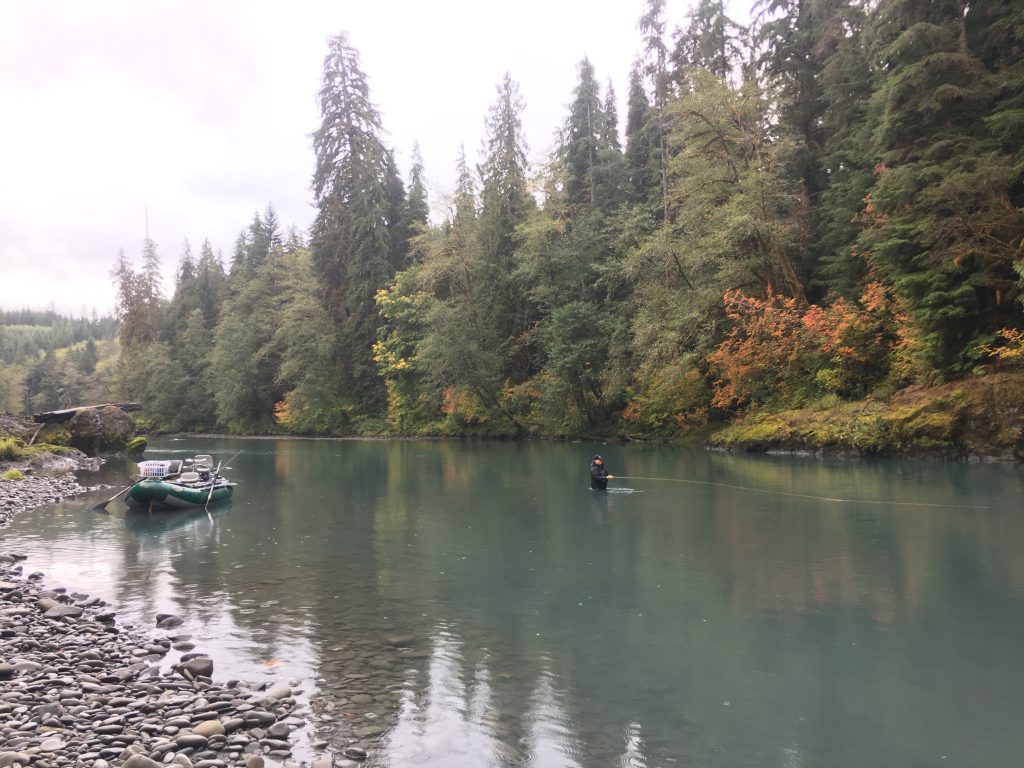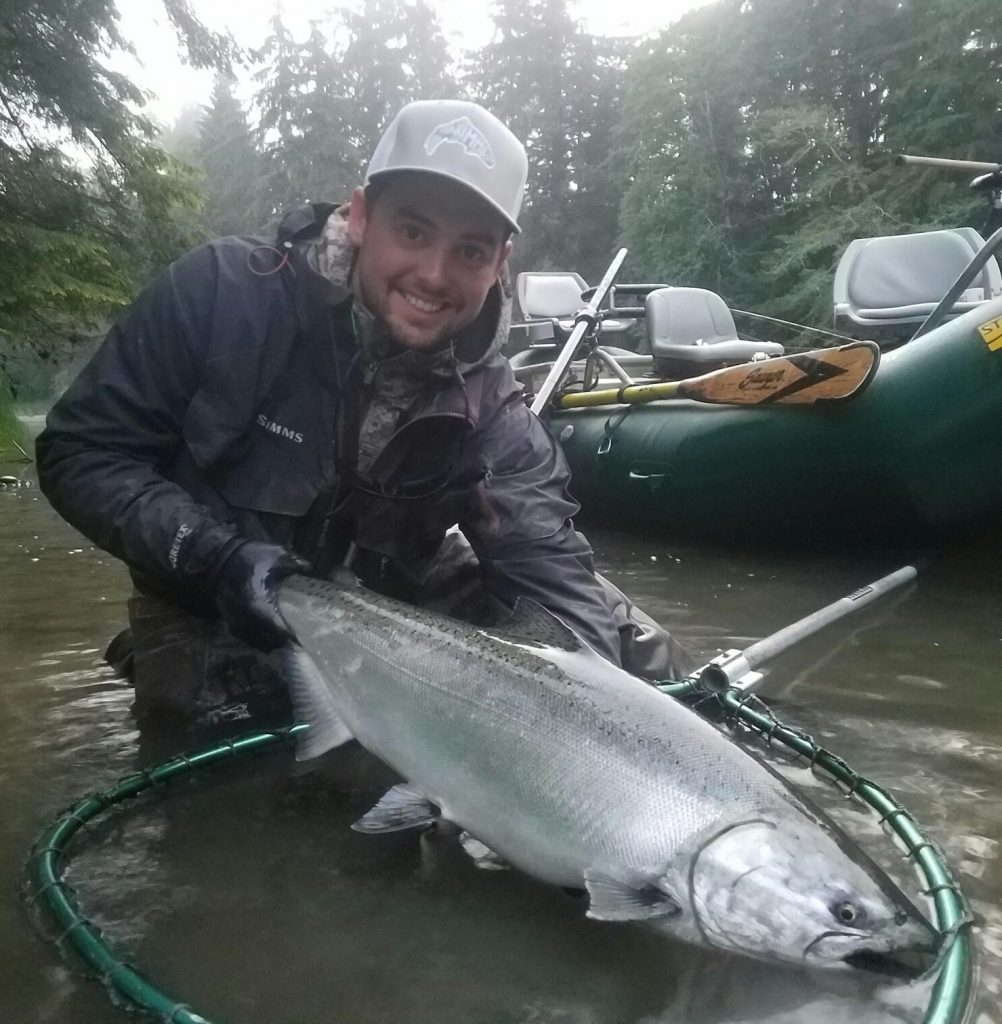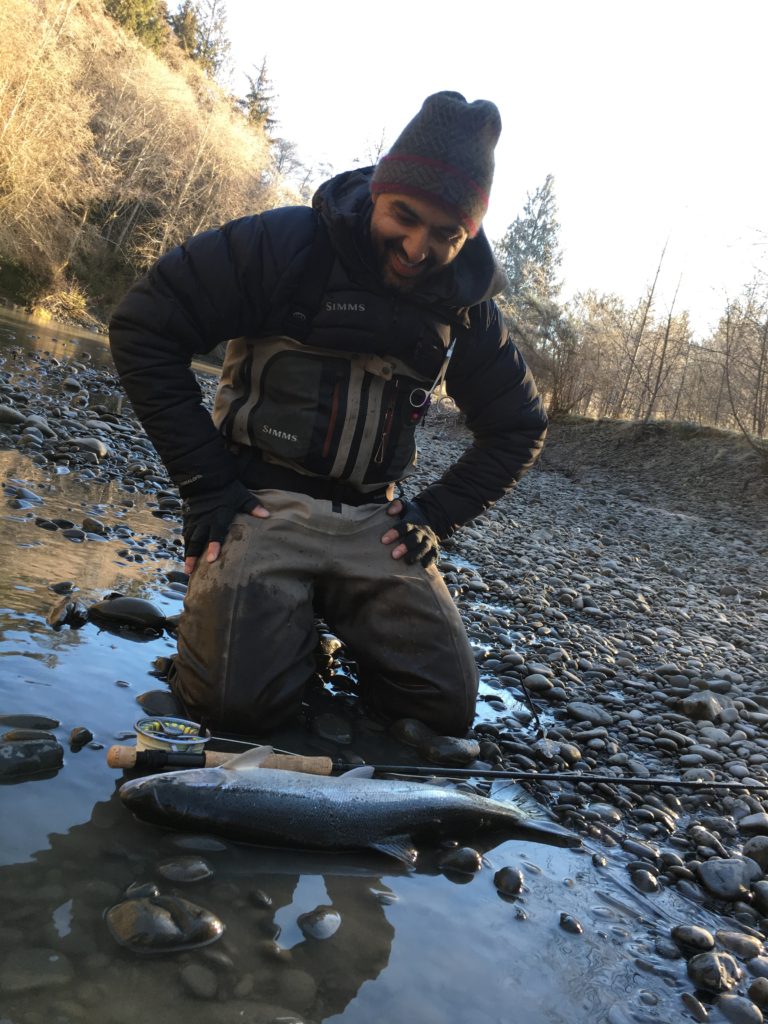How dirty do you like it?
I am a fly fisherman.
I have been since I was …12? Before that I was a pole and string fisherman who wanted to be a fly fisherman.
As a kid I was taught in the catskills tradition. That is a dry fly, upstream. Anything else and you are just a dirt bag.
“If the bag fits” as they say.
Because of course we fished other ways. Giant live baits for striped bass, trolled feathers for tuna, plastic worms for large mouth bass, worms and split shot for trout in the local creek. But I grew up, mostly identifying as a fly fisherman.

For the last 20 something years I have been on Washington’s Olympic Peninsula,which means salmon and steelhead.
And I have supported myseldf mostly as a fly fishing guide, but sometimes a gear fishing guide.
Dry fly fishing for salmon and steelhead? Love it. Spey fishing? One hand swinging from the boat? Stripping flies? High stick nymphing? Indicator fishing? Back bouncing huge balls of roe for spring chinook?
Man I am there for the whole program.
A lot of fishermen and even more guides tend to specialize, and I have been part of that group at times.
Maybe because I tend to spend a lot of days on the same water, (somewhere around 5 days a week, 46 weeks a year) I just have become enamored with the variety.
It is a mental exercise as much as anything, and I need that.
I spent years only swinging flies, and ignoring water that was poorly suited to that purpose. When I added gear fishing and indicator fishing back in, it definitely expanded my view of where I could successfully swing a fly.
It also gave me insight into what was happening in the water that I was not fishing. It gave me new ideas about how the fish were using that water.
Different gear causes me to look at the water very differently, I see it differently and think about it differently.
Some weeks ago when it looked like I might get some time to fish on my own, I came up with an awesome plan.

There are three decent steelhead holes I can easily walk to from my house. I planned to go every morning and spend two hours really figuring out how to fish every rock and seam in each of those 3 holes. I wanted to figure out how to catch every steelhead I could, using every method I could think of. But max it at 2 hours of fishing a day, and fish all three holes each day.
For starters I wanted to spend a couple days with a spin rod and bobber to dial in a handful of super high percentage spots. Then I could start swinging and hopefully develop some predictable winter run dry fly action.
I figure it would take weeks, which seemed fine.
Day 1.
I missed 2 bites on one cast from what I am pretty sure was the same crazy aggressive fish in hole number one. Hole number 2 just didn’t fish well with a float and got me thinking about alternatives.
This hole has always been a bit in an enigma for me.
It often has steelhead when the flows are low enough, but both salmon and steelhead seem to be really really hyper aware of anything on the surface.
A bobber, indicator, or fly line seems to spook them really easily. Far more so than in other similar spots just upstream or downstream.
It must be some perfect combination of depth, riffle, and light, and, I imagine the proximity to salt water. The fact that they have just moved a long way upriver without any deep water refuge may also have something to do with it. Whatever it is, they are often there, edgy, nervous and easy to spook, and generally a bobber is a problem.
The rig I brought probably wasn’t gonna work, and 2 hours hiking and fishing time doesn’t leave time for re-rigging on the go. So I left spot #2 without a bite, but with a lot of thoughts about how I might try differently tomorrow.
In hole 3 I hooked……nothing, and went home. So 2 bites, no fish.
Day 2
The next day was about the same. Hole #1, nothing, hole #2, nothing, hole #3 I hooked a nice big bright hen on the first cast and lost her after about 10 seconds.
So Day 1, two bites no hook ups, day 2, I bite, one hook up.
Back home I monkeyed around with my rig some more. What I wanted, more than fish really, was the feeling that my rig was fishing exactly correctly in every spot I wanted to throw it.
Once you have achieved that, you can be confident that your not missing chances on aggressive fish.
Day 3
So day three, In the first hole my re tooled rig fished great.
It stayed down in the water, never snagged, mended easily, was un obtrusive and basically gave me an all around fishy vibe.
It didn’t get bit however, and also failed to get bit in the second hole, but fished pretty well.
Hole #3 I got bit on the first cast, exactly where the fish from the day before ate it, and I completely farmed the hook set and came up empty.
I gave it about 5 min before I cast again, and landed a decent pink stripe buck on that cast.
A few casts later I hooked another fish about 20 feet upstream and more out into the current from the first one.
This makes sense to me. Assuming the first fish was sitting with friends (like the hen I hooked there the day before) hooking it may well have spooked his buddies. Generally if fish are near the back of a piece of holding water, spooking them will move them upstream and into heavier water.
The fish fell off, but I didn’t mind. This hole is essentially about 40 yards of fast choppy boulder garden that runs about 2 and a half feet deep. I worked through the whole section and managed one more hook up.
The last fish was a red stripe buck that bit way down stream and way on the other side of the river.
It bit on such a long drift that I was pretty confident I would never get the slack out in time to hook it, but the fish was patient and determined and was still there when I finally got the line tight.
In the 3 days, fishing 2 hours a day, I had refined my spin rig, and gained confidence that there was one rock that was high percentage in my three holes.

That was a good start. Based on years of fishing these spots I was pretty sure that over the next 6 days or so I would find as many as three more exceptionally high percentage spots in my three holes.
At that point the plan was trying to figure out all the different and creative ways I could to make a steelhead bite something it shouldn’t.
I would begin fly fishing with the knowledge that the bulk of my fishing time would be spent fishing in super high percentage water, and that if I wasn’t hooking fish, I was doing something wrong.
Any way, the point (not that there needs to be one, I mean, we are talking about a fly fishing blog here, so….) the point is that a few days with a gear rod excelerated my learning curve with the fly rod.
That is often, but not always the case. I would say that for October steelhead here, they bite a dry fly or caddis pupa almost better than ANYTHING. I don’t really see any advantage to a spin rod at that point, and I could site other examples, but for winter steelhead extending your range and control is generally an advantage.
If your goal is to catch a steelhead on your spey rod, then definitely only use a spey rod. If your goal is to learn as much as possible about catching steelhead before you die, then some experimentation may be advantageous.
Jim Kerr
Raincoast guides
Forks wa

Good article Jim. I agree that fishing a variety of methods is super fun and engaging. They all have their attributes. I really enjoy spoon and spinner fishing!!!
yeah, some years ago I spent almost all my personal fishing time with spinners. I learned SO much. An amazingly under rated and complex bait.
Jim, Thanks for an excellent blog post. I’m not a great angler but I’ve had the privilege of fishing with some great ones. For a long time I was a “swinging purist” but, thanks to RainCoast Guides, I started fishing with gear. I find it every bit as challenging as Spey-casting and swinging, if not more so. I’ve even purchased a level-wind and am trying to master it for better casts and longer drifts. It’s a lot of fun and, as you describe, I’m getting an education on winter steelhead that has opened up new possibilities … which is what it’s all about as far as I’m concerned. Thanks for an excellent article!
Well said, Jim. Good memories on the Hoh with you and Joe. Look forward to a few more.
LarryMac
Jim,
I like how you think outside the box, use idle time productively, and are willing to try new things. Thanks for being open minded in December when I wanted to try euro-nymphing for steelies. Looking forward to soon fishing with you again.
Steve Lordon